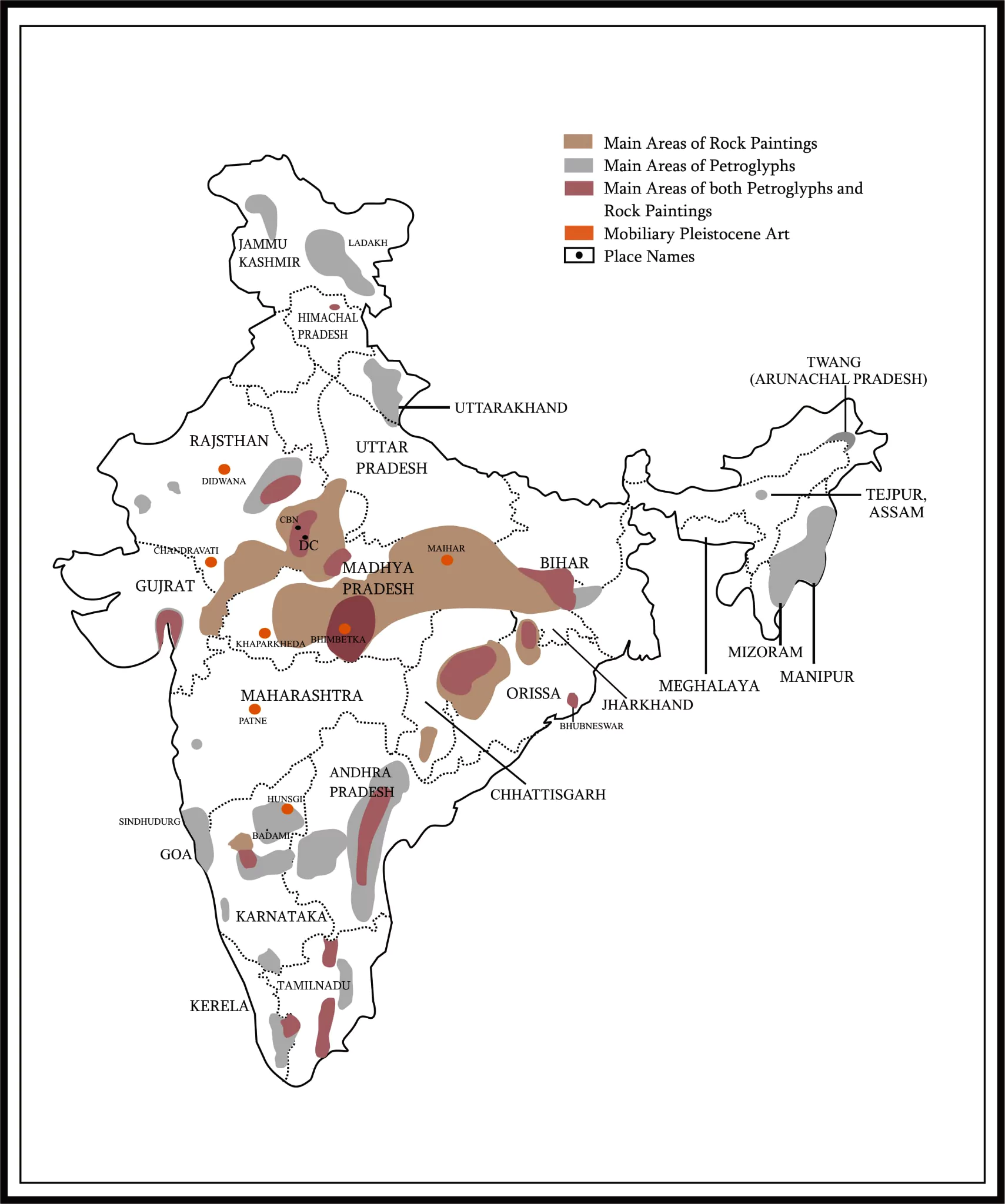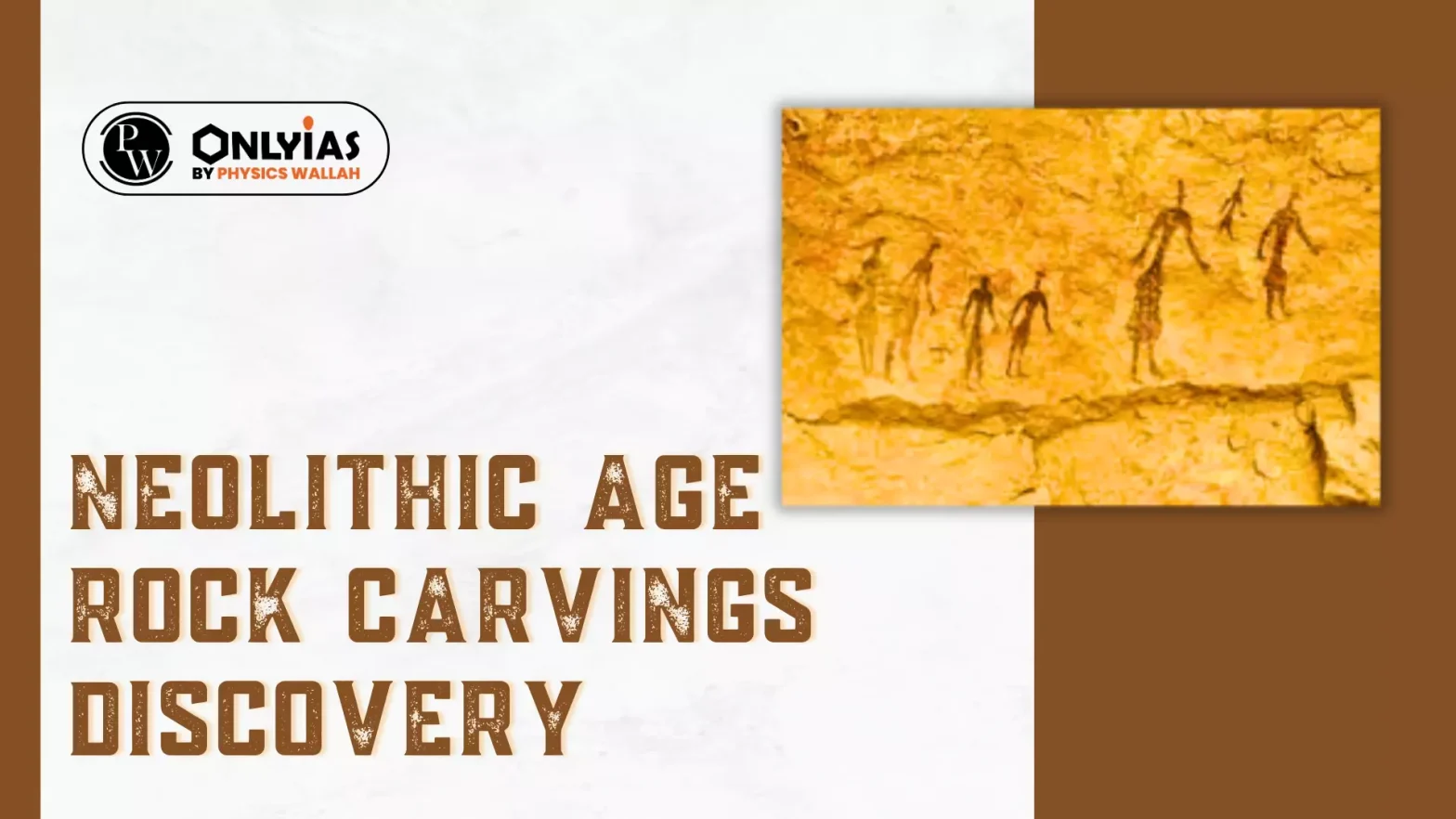Recently, Mauxi village in Sattari taluka of Goa has become a hotbed of neolithic discoveries with ancient rock carvings being discovered on the Zarme riverbed.
Discovery of Neolithic Age Rock Carvings
The Archaeological Survey of India (ASI) confirmed that ancient rock carvings found on the meta basalt rock along the dry riverbed of the Zarme river belong to the Neolithic period. The Rock Carvings were discovered by local residents 20 years ago, these carvings provide insight into the region’s early inhabitants.
Key Findings about the Rock carvings
- Depictions: The carvings depict animals like zebus, bulls, and antelopes, as well as footprints and cupules.
- The circular cavities on the rock surface indicate the community’s role in discovering historical artifacts.
- Significance of Rock Etchings: Around 20 rock carvings with bruising techniques and contemporary tools recovered from the riverbed confirm the historical importance of the site.
- Mysterious Cupules: One notable feature is a rock with cupules found outside the Puravati Temple, initially interpreted as representing a star constellation with 27 cupules but later found to have 31 cupules, raising curiosity about their significance.
- The exact purpose of the cupules remains unknown.
Enroll now for UPSC Online Course
Significance of the Findings
- Neolithic Origins: The Archeological Survey of India has confirmed the Neolithic origins of the site, as this era marks a significant milestone in human history when the domestication of cattle began.
- Trident Carving: A trident carving, symbolizing the Iron Age, implies the enduring importance of the site across different historical periods.
- Early Settlers: The existence of the Dhawad community, among the early settlers and skilled ironsmiths, contributes an additional dimension to the historical tale, despite later displacement by new settlers.
Dhawad community
About: The Dhawad community, belonging to the Tirole-Kunbi group, resides in Maharashtra, India. Specifically, they are a subset of the Kunbi Tirole caste, which is predominantly an agricultural community situated in the Khandesh region of Maharashtra. |
Prehistoric Rock Paintings of India
- Upper Paleolithic Period: In the Upper Palaeolithic Period, people made some of the earliest paintings. These artworks showed simple drawings of animals like bison, elephants, and tigers, as well as basic human figures.
- They were found at places like Bhimbetka and Jwalapuram.
- Mesolithic period: During the Mesolithic period, India witnessed an abundance of rock paintings, with human activities taking center stage. Scenes depicted include group hunting and communal dances. Animals were portrayed realistically, while humans were stylized.
- Notable sites from this era include the Pachmarhi and Adamgarh Hills in Madhya Pradesh.
- Neolithic-Chalcolithic period: In the Neolithic-Chalcolithic period, rock art started featuring pottery and metal tools. These paintings were vibrant and lively, often using white and red colors, possibly from ground haematite and limestone.
- Human figures were portrayed as adventurous, while animals appeared youthful and majestic.
- Important locations from this time include the Chambal region and Daimabad in Maharashtra.

Stone Age
The Stone Age, a prehistoric era, was defined by the use of stone tools and divided into three main periods: the Paleolithic, Mesolithic, and Neolithic.
- Paleolithic Age: It spanned from about 2.6 million years ago to around 10,000 BCE. It marked the earliest use of stone tools by hominids like Homo habilis. During this time, humans lived as hunter-gatherers, relying on stone tools for various tasks such as hunting and food processing.
- Mesolithic Age: Occurring approximately between 10,000 BCE and 5,000 BCE, varied by region. It was characterized by advancements in tools and adaptations to changing environments, including the domestication of certain plants and animals.
- Neolithic Age: It began around 12,000 years ago and concluded at different times globally, ranging from 4500 BCE to 2000 BCE. It saw the widespread adoption of agriculture and animal domestication, leading to settled communities, the development of pottery, weaving, and more complex social structures.
- The shift to agriculture transformed human societies, laying the foundation for the emergence of civilizations.
|
Enroll now for UPSC Online Classes
![]() 30 May 2024
30 May 2024


